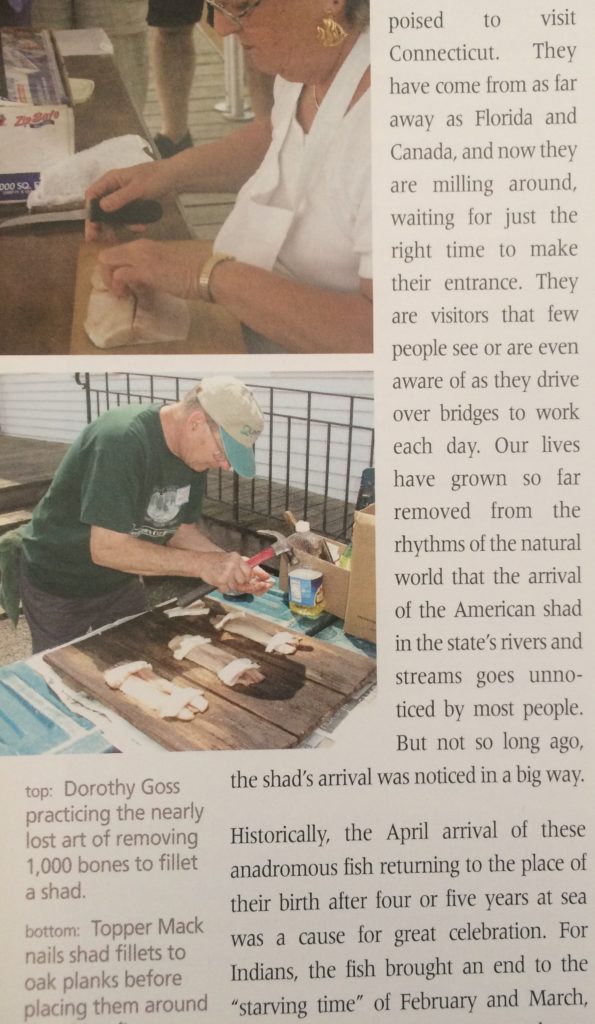(c) Connecticut Explored Inc. Spring 2006
Subscribe/Buy the Issue
It’s spring and thousands of visitors are poised to visit Connecticut. They have come from as far away as Florida and Canada, and now they are milling around, waiting for just the right time to make their entrance. They are visitors that few people see or are even aware of as they drive over bridges to work each day. Our lives have grown so far removed from the rhythms of the natural world that the arrival of the American shad in the state’s rivers and streams goes unnoticed by most people. But not so long ago, the shad’s arrival was noticed in a big way.
Historically, the April arrival of these anadromous fish returning to the place of their birth after four or five years at sea was a cause for great celebration. For Native Americans, the fish brought an end to the “starving time” of February and March, and for settlers, they were a welcome change from salted provisions.
Nineteenth-century fish companies along the Connecticut River formed cooperative ventures to maintain “fishing places.” These fishing piers often had buildings where men slept between the tides and where the catch was salted for shipment. David Dudley Field recorded some 80 fishing places along the Connecticut River in 1818. A year earlier, 2,194 barrels of shad were caught and salted at 26 fish places in Saybrook alone.
 Before the building of dams that halted the shad’s migration to their fresh-water spawning grounds, large catches were not uncommon. Shad came in such great numbers that the catch was often a community affair. A community “fish fry,” whose attendance consisted almost entirely of men from the several fishing companies in one locale, was a way to consume some of the catch, plus lot of liquor, on the spot. Big cooking fires were built on the riverbank, and out came the long handled frying pans on which the cleaned fish were seasoned and cooked with salt pork. Fish Fry Street in Hartford’s North End commemorates the location of one of these culinary events.
Before the building of dams that halted the shad’s migration to their fresh-water spawning grounds, large catches were not uncommon. Shad came in such great numbers that the catch was often a community affair. A community “fish fry,” whose attendance consisted almost entirely of men from the several fishing companies in one locale, was a way to consume some of the catch, plus lot of liquor, on the spot. Big cooking fires were built on the riverbank, and out came the long handled frying pans on which the cleaned fish were seasoned and cooked with salt pork. Fish Fry Street in Hartford’s North End commemorates the location of one of these culinary events.
Today, Essex, Connecticut continues to celebrate the state fish with a Shad Festival at the Connecticut River Museum on a Saturday in May, and a Shad Bake by the Essex Rotary Club in June. The Shad Festival is an opportunity for “deep submersion” in the history, culture, and lore of what author John McPhee called “the Founding Fish.” The day-long festival features talks and films about the historic and contemporary fishery, demonstrations of shad boning and plank cooking (both historic and contemporary), net-making, and casting and fly-making. In the evening, participants can learn to bone, sample the plank-cooked shad, and then board the spectator boat RiverQuest to watch fishermen set their nets and, hopefully, haul their catch. Visitors can talk with the experts and take part in these age-old Connecticut River rites of spring.
Brenda Milkofsky was senior curator at the Connecticut River Museum.
Explore!
The Connecticut River Museum
Steamboat Dock
Essex, Connecticut
Ctrivermuseum.org

